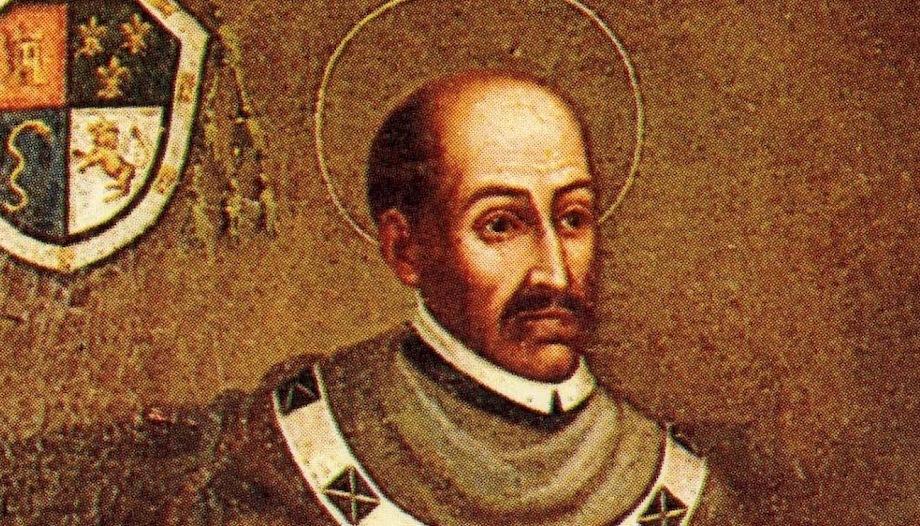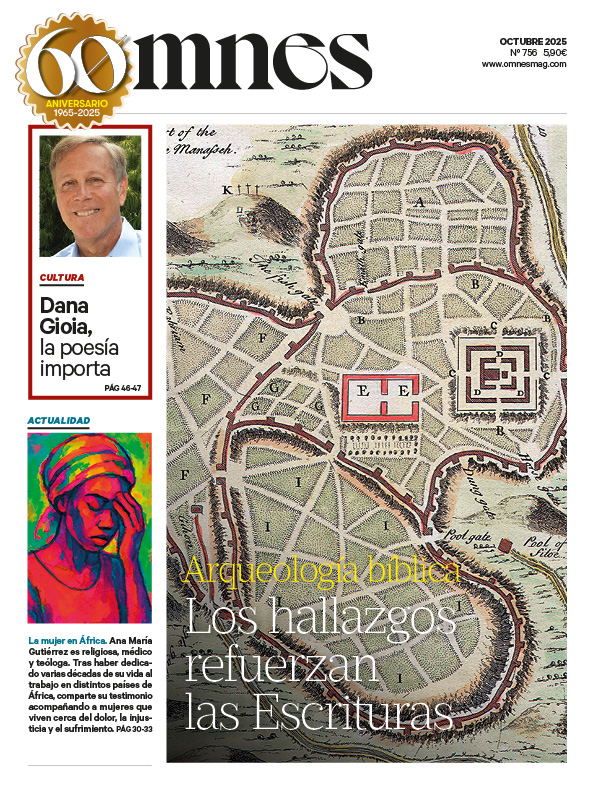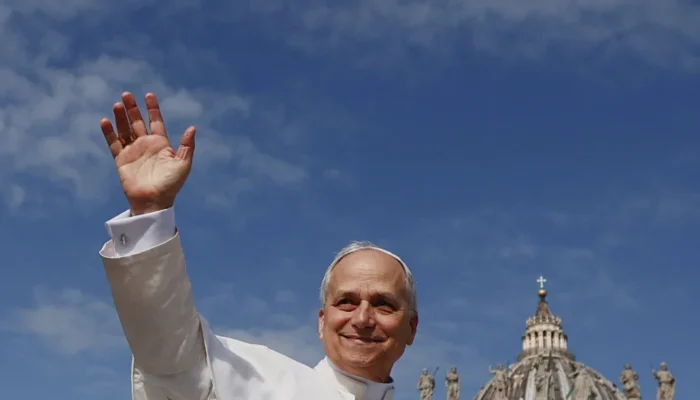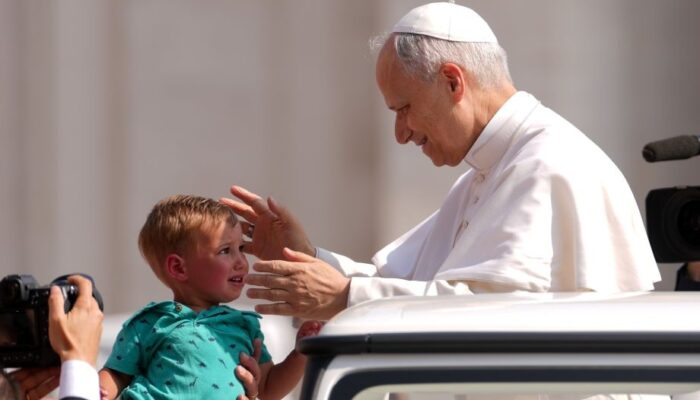Few remember that the so-called 'Borromeo of the Indies', Saint Toribio Mogrovejo, who died in Peru in 1606 after 25 years as Archbishop of Lima, was named patron of Latin American bishops by Saint John Paul II, and praised by Benedict XVI for "his selfless dedication to the edification and consolidation of the ecclesial communities of his time, always seeking unity".
And it may also not be remembered that the saint was described in January 2018 by Pope Francis, in his trip to Peruas "a model evangelizer (...). One of the great evangelizers of Latin America", together with St. Joseph of Anchieta. "You are a land 'ensantada'. You are the Latin American people that has more saints, and saints of high level, right? Toribio, Rosa, Martin, Juan", said the Papa.
Santo Toribio Mogrovejo was buried in Lima in 1607, beatified in 1679 and canonized in 1726, says historian José Antonio Benito Rodriguez, resident in Peru for 30 years (1994-2024), former director of the Institute of Toribian Studies in that country and secretary of the Peruvian Academy of Church History. Dr. Benito provides data that break the schemes of a 'black legend Spanish in the American evangelization.
The capital struggle of Saint Toribio Mogrovejo was for dignity "He adds that St. John Paul II, on his trip to Peru in 1985, found no better speech to address the bishops than a semblance of St. Toribio, 'for whom the first reform was his own'. José Antonio Benito, from Salamanca, has written numerous books (45) and articles, and in his blog JABENITO' has received three million visits.
What interest does a character from the past have for our time?
It enlivens our roots, gives us identity, solidity, firmness... The Church is a rock but it navigates. Tradition bequeaths us the best that lives in the past to illuminate the present. They let in light and give warmth. Specifically, Santo Toribio has been the one who has laid the foundations of the spiritual wealth of Peru as "Ensantada land". with a great number of saints, blessed, venerable and servants of God.
Pope Francis has just published on November 21, 2024 a Letter on the renewal of the study of the Church history to help priests to 'better interpret social reality' and arrive at 'courageous and strong choices' that, nourished by 'research, knowledge and sharing', respond to the 'paralyzing refrains of cultural consumerism', building a fraternal future.
Recent Popes have dedicated very complimentary words to St. Toribio de Mogrovejo, but he is still quite unknown. How do you see him?
It is a long history that has to do with not belonging to a religious order and being part of the secular clergy, the fact of changing the boundaries of the dioceses (León-Valladolid) in the late nineteenth century, the fall of the colleges as the Old Regime in the late seventeenth century, the non-existence of a vigorous Brotherhood, the Eurocentrism of the Church, the lack of popular devotion despite the fact that Rosa de Lima or Martin de Porres - so popular - were confirmed by him.
In any case, I can affirm that since the celebration of the IV Centenary of his death, in 2006, thanks to congresses, publications, exhibitions, devotions, his figure is becoming better known and followed.
He has been called the 'Borromeo of the Indies'. St. John Paul II named him patron of the bishops of Latin America.
The comparison between St. Toribio Mogrovejo and St. Charles Borromeo was first expressed by his first biographer, A. de Leon Pinelo, who was surprised by the coincidences, and always refers to the reforming character of the bishop, faithful to the norms of the Council of Trent, Borromeo in Milan and Mogrovejo in the Andes.
On the patronage of the bishops of America, nothing better than the text of St. John Paul II, May 10, 1983: "The bishops of the Latin American Episcopal Council (CELAM) profess a peculiar veneration for Saint Toribio Mogrovejo, Archbishop of Lima, who during the second half of the XVI century and the beginning of the XVII century, exercised pastoral care with the most ardent zeal over the faithful entrusted to him, promoting the religious life of the whole region and attending with special solicitude to the natives.
For this reason, Venerable Brother Antonio Quarracino, President of the said Council, welcoming the unanimous desire of all the bishops, ratified the election of Saint Toribio de Mogrovejo as patron of the entire Episcopate of Latin America and insistently requested that such election and approval be confirmed [...]".
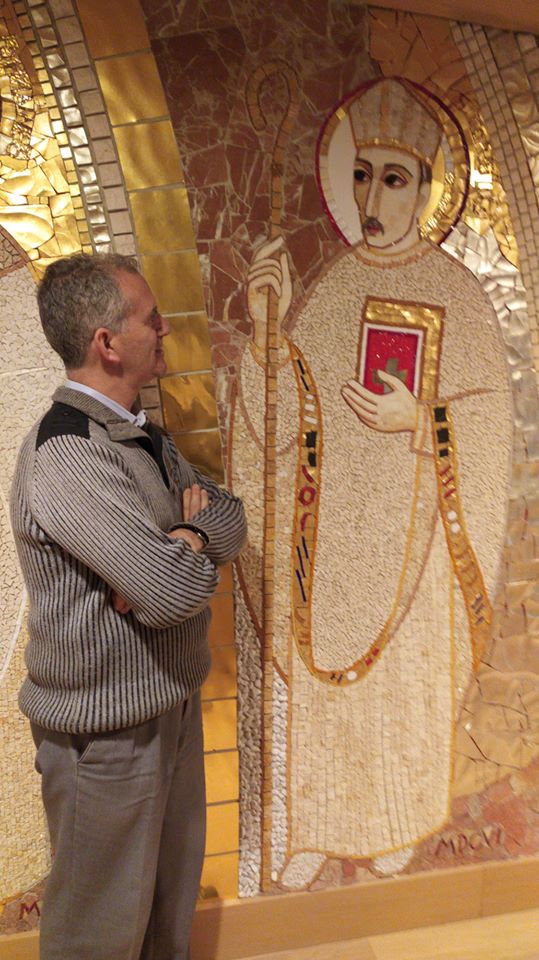
Pope Francis has called him a "great evangelizer". In reality, he was an itinerant archbishop, a 'Shepherd with the smell of sheep', you have written.
His first biographer A. León Pinelo defined him graphically: "His life was a wheel, a perpetual movement that never stopped. And if man's life is a militia on earth, he well deserved the title of soldier of Christ our Lord, because he never failed in the militant of his Church, to achieve the reward in triumph, which we piously understand that he enjoys"..
I rescue the luminous words of Dr. Fr. Carlos Rosell de Almeida, Rector of the Faculty of Pontifical and Civil Theology of Lima on the occasion of his inaugural lecture of the year 2019 with the title "Santo Toribio Alfonso de Mogrovejo in the light of the pastoral lines of Pope Francis". He referred to the Evangelii gaudiumThe programmatic document of Pope Francis, highlighting five points: 1. 2. Go to the peripheries. 3. To feel the spiritual joy of being People. 4. Allowing oneself to be surprised by the Spirit. 5. The value of poverty as a forceful factor of the Church's credibility.
Benedict XVI also dedicated a few words to him.
On the occasion of the fourth centenary of the death of St. Toribio de Mogrovejo, he sent the following message to the participants in the celebrations of the fourth centenary of the death of St. Toribio de Mogrovejo: He, in fact, distinguished himself by his selfless dedication to the edification and consolidation of the ecclesial communities of his time. He did so with a great spirit of communion and collaboration, always seeking unity, as he demonstrated by convoking the Third Provincial Council of Lima (1582-1583), which left a precious collection of doctrine and pastoral norms.
One of his most precious fruits was the so-called 'Catechism of St. Toribio'... The profound missionary spirit of St. Toribio is evident in some significant details, such as his effort to learn different languages, in order to preach personally to all those who were entrusted to his pastoral care. But it was also a sign of respect for the dignity of every human person, whatever his condition, in whom he always tried to awaken the joy of feeling himself to be a true child of God.
How did Saint Toribio live? It seems that before reforming his priests or the faithful of his diocese of Lima, he reformed himself through prayer and penance....
León Pinelo points out that he led a very regular and systematic life throughout the quarter century. Aware that the first reform was his own, he subjected himself to a strict regime of life, of faithful obedience to his timetable.
He would get up at 6:00 a.m. without any help from a porter to dress him or put on his shoes. Then he would dedicate time to pray his devotions and the canonical hours that prepared his spirit for the celebration of the Mass. As an act of thanksgiving, he would go through the church and sacristy, praying on his knees at each of the altars. He would then go to the palace, and in his oratory, kneeling, he would dedicate two hours to mental prayer. Then he would grant an audience to those who requested it; if there were no visitors, he would go to the library to study Canon Law or to imbibe spiritual reading.
The lunch was so temperate, always set with the reading of some canons of the Council of Trent or Sacred History. When the tablecloths were removed, he pronounced two responsos, one for the souls in purgatory and the other for his Colegio Mayor de San Salvador de Oviedo.
From noon to night, he dealt with the affairs of the archbishopric with the advisors, notaries and ministers of the courts. He did not admit idle visits. He was very devoted to the Blessed Sacrament and tried that in the doctrines of the Indians the tabernacle was placed so that they could give viaticum to the Indians and receive communion on Easter.
He also stood out for his great concern for the natives, the Indians, the poorest of the poor. Different profiles are usually drawn on the evangelization of America...
I dedicated my Bachelor's thesis to the human and social promotion of the Indians in the councils and synods of Saint Toribio, preparing a catalog of rights and duties in such meetings, which I presented in 1991 in the IV National Congress of Americanists held in Valladolid. For example, the Synod of 1582, clearly and emphatically demanded that the Indian priests instruct the natives in economic exemptions, privileges and rights: "The Synod of 1582, for example, clearly and emphatically demanded that the Indian priests instruct the natives in economic exemptions, privileges and rights. the Indian priests and visitors will be particularly careful to make them understand and declare it to them... so that they understand what is provided in their favor... and the said Indians will not be harassed or bothered in any way... (c.l9).
His main struggle was for the "infinite" dignity of the person. During his trip to Peru in 1985, St. John Paul II found no better speech to address his bishops than a semblance of the life and personality of Saint Toribio, for discovering in him "a courageous defender or promoter of the dignity of the person, an authentic precursor of Christian liberation in your country (Peru), a respectful promoter of the aboriginal cultural values".
Some details of his beatification and canonization.
The process of beatification and canonization meant a whole deployment of witnesses aimed at recalling the "life and miracles" of Mogrovejo. All the places linked to our character will participate with the ecclesiastical tribunals in order to testify about the holy life of Toribio.
Two miracles were sanctioned by the Congregation of the Sacred Rites of the Holy See: the total and instantaneous healing of Juan de Godoy, whose chest was pierced with a sword, and the spring of water that gushed forth in the town of San Luis de Macate.
In 1679 Pope Innocent XI beatified him on June 28, although the solemnity was celebrated on July 2. The Office and Mass proper to the Blessed was granted to the city and diocese of Lima, to the city of Mayorga and to the Colegio Mayor de San Salvador de Oviedo, in Salamanca.
After his beatification, he was canonized on December 10, 1726 by Pope Benedict XIII, together with St. Francis Solano, St. Aloysius Gonzaga and St. John of the Cross, among others.
Latin America has celebrated its Bicentennial. What would be your message inspired by Santo Toribio?
He gave the best of himself - profession, priest... - for others, crossing shores, building bridges... Realism but at the most... We have to feel the joy of being part of the People of God. Those of us who have received the gift of Baptism cannot remain, to use Pope Francis' colloquial expression, in a situation of "window-dressing", we must know what is happening with the people, only in this way can we illuminate from the Gospel the deepest concerns of the people of today.

